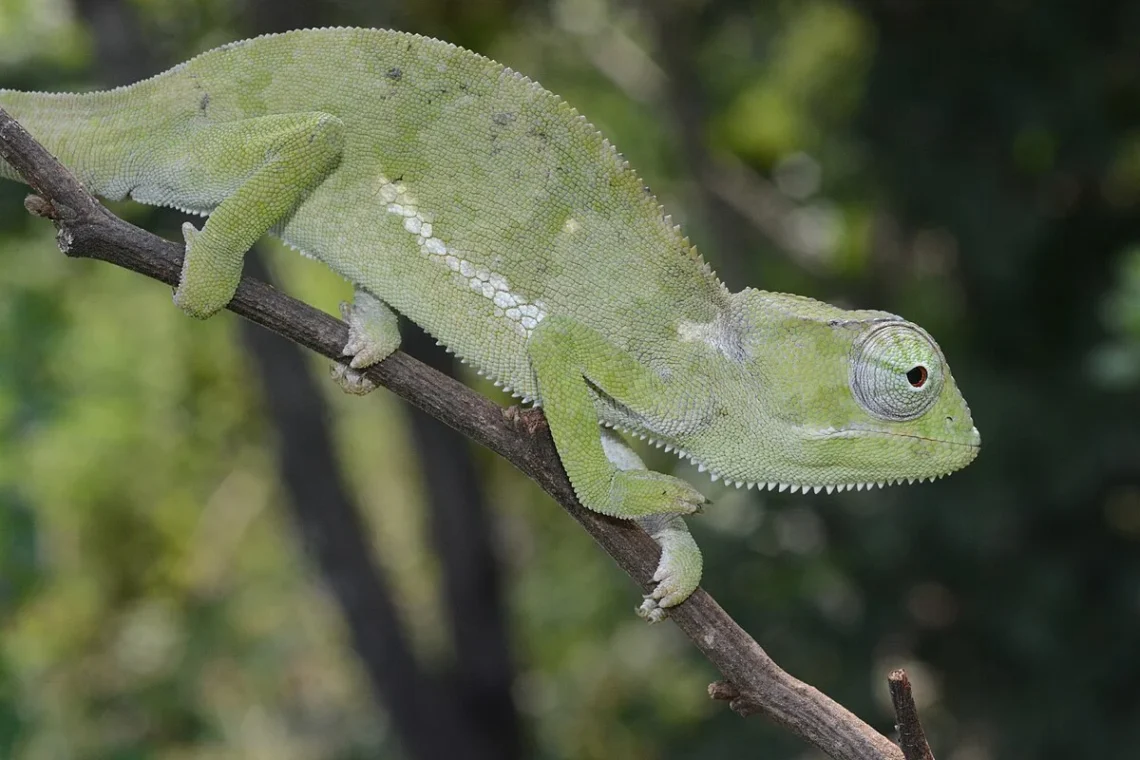Among the most extraordinary creatures in the reptile kingdom are the chameleónovité, known in English as the chameleon family (Chamaeleonidae).
These remarkable lizards are celebrated for their color-changing abilities, independent eye movement, and gripping prehensile tails. Found mainly in Africa, Madagascar, southern Europe, and parts of Asia, chameleons have evolved a wide variety of adaptations that make them some of nature’s most fascinating animals.
1. What Does “Chameleónovité” Mean?
The word “chameleónovité” comes from the Slovak and Czech term for the taxonomic family Chamaeleonidae, part of the order Squamata (lizards and snakes).
This family includes more than 200 species of chameleons, ranging from the tiny Brookesia micra — one of the smallest reptiles on Earth — to the impressive Parsons chameleon, which can reach over 65 cm (25 in) in length.
Classification Overview
| Taxonomic Rank | Name |
|---|---|
| Kingdom | Animalia |
| Phylum | Chordata |
| Class | Reptilia |
| Order | Squamata |
| Family | Chamaeleonidae (Chameleónovité) |
So, when scientists or educators in Central Europe refer to chameleónovité, they’re speaking about this entire family of color-changing reptiles.
2. Distinctive Physical Features of Chameleónovité
What sets chameleónovité apart from other lizards is their unique anatomy and physiology, adapted for life in trees (arboreal habitats) and precision hunting.
Signature Characteristics
-
Color Change:
Contrary to popular belief, chameleons don’t change color just to blend in. Their skin contains specialized cells called chromatophores and iridophores, which expand or contract to reflect different wavelengths of light. This process helps them communicate, regulate temperature, and display mood or dominance. -
Eyes That Move Independently:
Each eye can rotate 180 degrees independently, giving chameleons an almost 360-degree field of vision. They can look forward with both eyes to focus precisely on prey. -
Projectile Tongue:
Their tongue can extend up to twice their body length, launching at incredible speed to capture insects. -
Zygodactyl Feet:
Each foot has two toes facing forward and two backward, forming a perfect grip for climbing branches. -
Prehensile Tail:
Works as a fifth limb, helping balance and stability in trees.
These evolutionary traits make chameleónovité one of the best examples of adaptive specialization in the reptile world.
3. Habitat and Distribution of Chameleónovité
Most members of the chameleónovité family thrive in tropical and subtropical environments, where humidity, sunlight, and vegetation create ideal living conditions.
Primary Regions
-
Madagascar – Home to nearly half of all known chameleon species, including the colorful Panther Chameleon (Furcifer pardalis).
-
Sub-Saharan Africa – Species such as the Flap-necked Chameleon (Chamaeleo dilepis) live in savannas and woodlands.
-
Southern Europe – The Common Chameleon (Chamaeleo chamaeleon) can be found in Spain, Greece, and Cyprus.
-
Middle East and Asia – Smaller populations occur in Yemen, India, and Sri Lanka.
Although most are arboreal, some dwarf chameleons (genus Brookesia) live close to the forest floor and use leaf litter for camouflage.
4. Behavior, Diet, and Reproduction
The behavioral patterns of chameleónovité are as fascinating as their appearance. They are typically solitary, territorial creatures that rely heavily on visual signals to interact with others.
Feeding Habits
-
Carnivorous diet, primarily eating insects such as crickets, flies, and locusts.
-
Larger species may occasionally consume small birds or other lizards.
-
Hunting relies on stealth and precision, using their sticky projectile tongue to snatch prey in milliseconds.
Reproduction
-
Most chameleons are oviparous (lay eggs), though a few species are ovoviviparous, giving birth to live young.
-
Females often bury their eggs in soil or sand.
-
Hatchlings are independent from birth and receive no parental care.
Chameleons are diurnal (active during the day) and depend on sunlight for thermoregulation, moving between warm and shaded areas to maintain body temperature.





